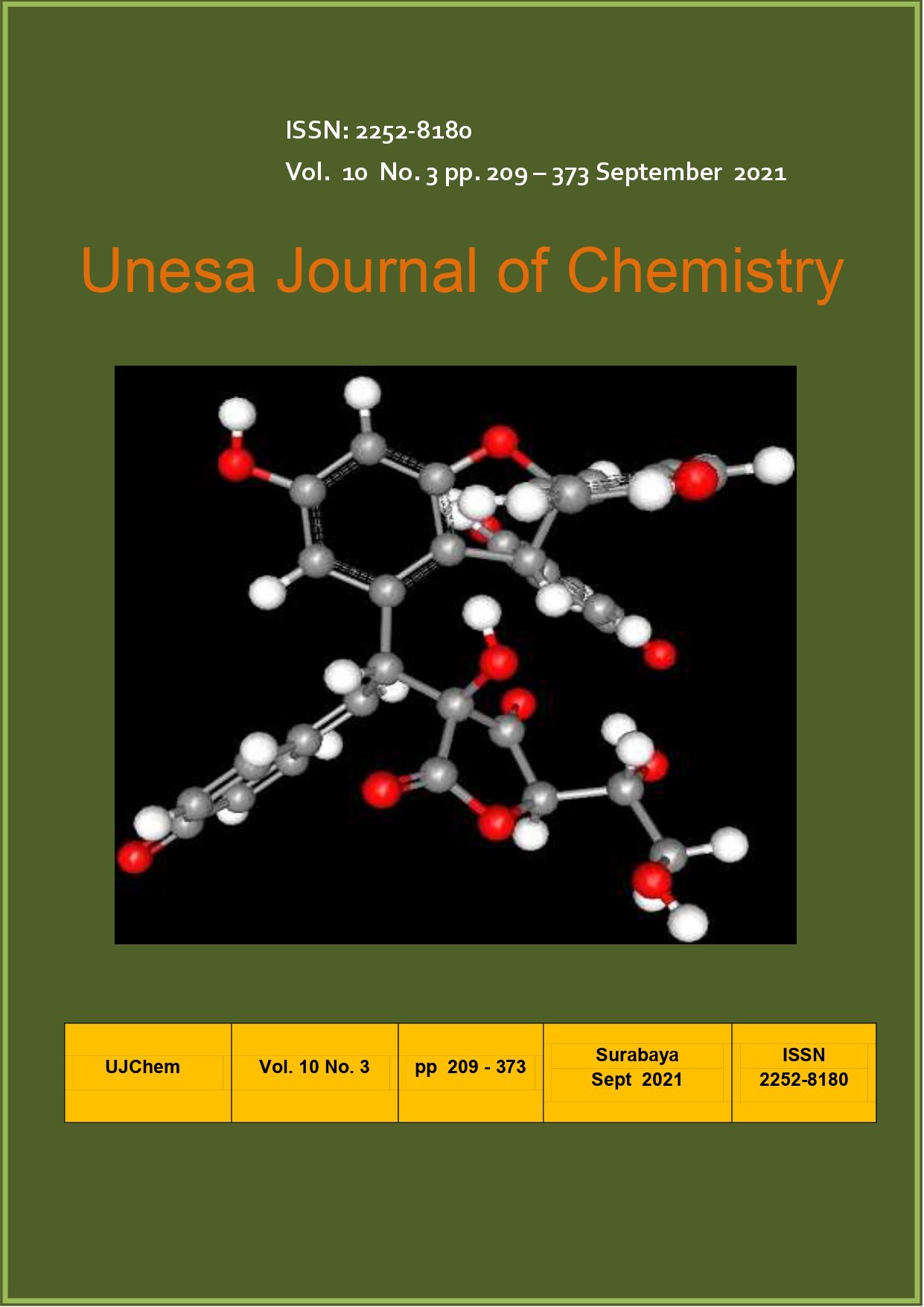REVIEW: IMOBILISASI ENZIM PAPAIN DENGAN SILIKA MESOPORI DAN KARAGENAN SEBAGAI BAHAN PENDUKUNG IMMOBILIZATION OF PAPAIN ENZYME WITH SILICA MESOPOROUS AND CARRAGEENAN AS SUPPORT MATERIAL
Main Article Content
Abstract
Papain is a protease enzyme obtained from papaya plant that able to hydrolysis protein into amino acid. Papain plays an important role in the industrial fields so generally papain immobilized on support material to maximize its function. This review is intended to describe the recent development of papain immobilized in silica mesoporous and papain immobilized in carrageenan. The method used was a literature review. The review of secondary data includes papain can be immobilized using one or more methods, like adsorption, cross-linking, entrapment, and covalent binding. Electrostatic interaction becomes the main driving force for papain adsorbed onto silica mesoporous or entrapped in carrageenan. FTIR (Fourier-transform Infrared Spectroscopy), molecular docking, and MD simulation (Molecular Dynamics) were used to analyze the presence of papain in the support material. The characteristics of the papain such as pH, temperature, activity, and repeated usage will change as a result of the immobilization process.
Key words: Papain enzyme, enzyme immobilization, silica mesoporous, carrageenan

